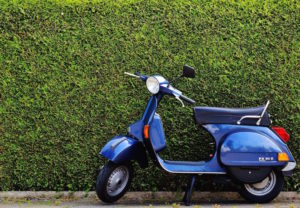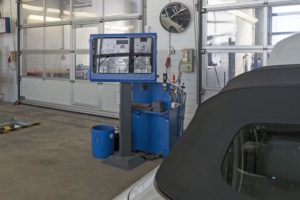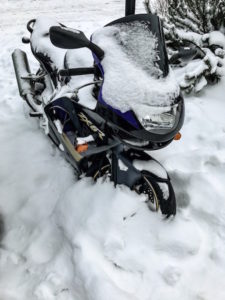VIEW OUR COMMERCIAL
As seen on TV

CHOOSE THE EASY OPTION FOR YOUR INSURANCE, WE’LL GET YOU A QUOTE IN NO TIME AT ALL.
LATEST NEWS
Have you ever watched a group of bikers ride past and thought to yourself, “That’s so cool! I’d love to be able to ride a motorbike!”? Or perhaps you’ve got an old classic motorcycle in the shed that’s been in the family for years, but needs a new carer to get it up and running? Whether you’ve sat on the back as a pillion, or never even been near a motorcycle, riding a bike is getting more and more popular among both men and women.
How hard is it to learn to ride a motorcycle? Here’s a quick guide to what you need to do to pass your test and start your motorcycling journey.
How old do I have to be?
To ride a motorcycle on the road in the UK you need to be at least 16 years and over. There is, however, no upper age limit for riding a motorcycle. Many bikers carry on enjoying riding well into their 60s, 70s or even their 80s. If you feel confident enough to handle the bike while it’s stationary then there should be no reason to stop riding!
There are several different types of motorcycle licence. Unlike a car licence (where you effectively have just two different types – a provisional and a full licence), the type of motorcycle licence you have will depend on what type of test you take and your age.
Types of licence
AM licence
This is intended for those over the age of 16 who want to ride a moped with no L-plates. However, you can ride on the road with L-plates for up to two years by taking the CBT or Compulsory Basic Training course (which all prospective motorcyclists have to take before being allowed out on the road). This means take-up of the AM licence has been low.
The only difference between the AM and the CBT is that an AM licence allows you to carry a pillion passenger on your vehicle. You are still restricted to vehicles of up to a maximum of 50cc with a top speed of around 28mph. Taking a pillion on a small moped would probably guarantee that you’d never get a speeding ticket!
The A1 licence
If you’re over 17 and want to move up from mopeds to larger vehicles once you’ve passed your test, you can apply for an A1 licence. You can then ride a motorcycle or scooter up to 125cc and carry a pillion passenger. After two years, you can then take a further test to upgrade to an A2 licence.
The A2 licence
This is for candidates over 19 years old and lets you ride a motorcycle of up to 500cc and carry a pillion. You can either take an A2 licence practical test after having your A1 licence for two years or, if you’re over 19 you can go straight to the A2 licence test.
The A licence
This is the licence that gives you full access to the world of motorcycling, as long as you’re over 21. A full A licence allows you to ride any size motorcycle. So if you’ve got a hankering for that Harley Davidson 1200cc cruiser then this is the licence to get. There are two routes to get your A licence. 1) You can go for a practical test after you’ve held an A2 licence for two years and effectively ‘upgrade’. 2) Alternatively, go through a Direct Access course with a qualified DAS instructor, which will include your CBT, theory and both Mod 1 and Mod 2 practical tests.
1) You can go for a practical test after you’ve held an A2 licence for two years and effectively ‘upgrade’.
2) Alternatively, go through a Direct Access course with a qualified DAS instructor, which will include your CBT, theory and both Mod 1 and Mod 2 practical tests.
Do I have to do a theory test?
Yes. Even if you already have a car licence, you will need to complete a theory test, which includes extensive questions on roadcraft, and a ‘Hazard Perception’ test. Once you’ve done the theory test you have up to two years to complete the rest of your training and tests, otherwise you’ll need to resit the theory test again.
The CBT
Compulsory Basic Training has to be completed by all motorcyclists, regardless of age or which licence they’re going for (or even if you just want to ride on L-plates without taking your motorcycle licence at all). A CBT course takes a day and should cost you around £100-£135. If you’re still not sure whether or not you want to go on to ride a motorcycle full time then a CBT is a good place to start, as it will give you the opportunity to ride for up to two years on L-plates so you can work out if you want to go further with your motorcycling journey or not.
You’ll do a classroom lesson and an off-road (or ‘pad’) section where you’ll learn how to manoeuvre the motorcycle, simple daily checks, and how to control the vehicle slowly. Then you’ll go out on the road with an instructor so that they can see you’ve understood what you’ve learned in the classroom and on the pad, and can translate it into ‘real-life’ conditions.
Going for your full licence
If you’ve done your CBT and your theory test, you can then go on to train for your full licence. For any of these, you’ll need to do a Mod 1 and a Mod 2 test. Mod 1 is your chance to show the examiner that you can control the bike through a series of set manoeuvres such as a U-turn, a slow slalom and a figure-of-eight, wheeling the bike, and that all-important emergency stop. It takes approximately 15 minutes and is the most intense part of the test, so you’ll need to make sure your instructor takes you through the required syllabus very carefully.
Mod 2 is an on-road test, where the examiner follows you for around 40 minutes along set routes to see how you respond to traffic, that you’re safe on the road, and that you’re confident on the motorcycle.
Phew! After all that, and as long as it’s all gone well, you’ve got your motorcycle licence and can start enjoying your riding!
Is it expensive?
Honestly? Yes. It is expensive to get your motorcycle licence these days. Expect to pay anything from £800 upwards for a full Direct Access course (including CBT and Theory tests). It’s also physically intense, with training crammed into just a few days and with the tests for Mod 1 and Mod 2 at the end of the course.
Is it worth it? Well, just look at the grin you’ll see on any motorcyclists’ faces as they glide effortlessly through the traffic and then out onto the open road, and you’ll see that it’s absolutely worth every penny!
There’s nothing better than getting your motorbike out on a sunny day, blasting off down the road and just riding. The destination isn’t that important, what matters is the journey! When the sun is shining, there’s no feeling in the world quite as liberating or as enjoyable as riding through the countryside with the wind in your hair.
But how about when the sun dips behind a cloud, or you have to ride all year round to get to work? Riding a motorbike in wet weather isn’t as daunting as it may sound. With a little bit of preparation, you may even get to enjoy it!
Why ride in the wet?
To become a better, all-round rider, you need to keep improving your skills. In the UK, we’re more likely to be heading out when it’s raining. So learning to ride confidently and safely in wet weather is a must. Even if you set off in bright sunshine, the fickle British weather can mean that you end up riding into a damp patch. If you’re not confident or experienced in riding in wet weather, you can’t simply leave the bike at the side of the road and walk home. Instead, you’ll need to know how to cope with the changing road conditions if you want to reach your destination safely.
If you’re a new rider or even an experienced rider that just hates riding in the wet, here’s a quick guide to help you cope with wet weather riding.
Check the bike
You should be doing weekly (and even pre-ride) checks. If you know you’re going to be riding in wet weather, there are a few important steps you need to consider. Bikes do behave differently in wet conditions but don’t worry, it’s not as dramatic as you might think.
Tyres
New tyres have deep grooves cut into the rubber. This helps to displace the water as you’re riding and give you a better contact patch with the road. Even in dry conditions, your contact patch with the road is approximately the size of a credit card. So you can understand how important it is to make sure that contact patch in wet conditions is as good as it can be.
- Check the condition of your tyres if you’re going to be riding regularly in wet weather.
- Ensure that you keep a very close eye on your tread depth. This maximises the amount of water dispersal, and give you better contact with the road surface.
- Also, make sure that your tyres are inflated to the correct pressure. Under-inflated tyres won’t give you any additional grip on the road (and will wear faster). Over-inflated tyres will reduce the amount of grip you have.
Brakes
Wet weather will, inevitably, reduce the efficiency of your brakes. Give yourself additional space and braking time (remember to at least double your usual two-second gap between yourself and the vehicle in front to allow for the conditions).
Normally when riding a motorcycle in the dry, we tend to rely more on the front brake for stopping than the rear. In wet weather ‘grabbing a handful’ of front brake could easily cause the front of the bike to twist and skid. In wet weather, balance your braking evenly between your rear and your front brake, applying the rear brake marginally earlier than your front, and squeezing both gently. Harsh braking in wet conditions is definitely not recommended!
Electrics
Motorcycle electrics are exposed to the elements, and in wet weather can be adversely affected, especially by torrential rain or surface water. If you are riding all year round, silicone wrap may help to keep water off the most sensitive electronics.
Lights
In wet weather, visibility is reduced considerably. Not only does the water on windscreens reduce the amount car drivers can see, but even raindrops on car wing mirrors can almost obscure the view of other vehicles the driver has. To counter this, ride with your headlight on in wet conditions so you can be seen by other vehicles.
Slow down!
Wet conditions mean that the road surface can have additional hazards such as standing water. This can cause aquaplaning – when a layer of water between the road surface and the tyre causes the vehicle to lose traction. You will need to adapt your riding style to the conditions, and the most important thing to do is to slow down. You don’t need to crawl along at 5mph, but a small drop in speed will give you more time to react to the changing conditions.
What to wear
To help other drivers see you in wet conditions, a ‘Sam Brown’ Hi-Viz belt or jacket will increase your visibility. Don’t forget your own comfort, either. Firstly, if you’re wet and cold you won’t be able to concentrate properly on the road. Make sure you have adequate waterproof clothing to keep you as dry as possible. If you’re riding all year round, a set of handlebar ‘mits’ will help to protect your hands against the weather. That means you will always have full control of the vehicle. If you’re planning on riding in the coldest conditions then consider heated gloves or grips to keep your hands warm.
Unfortunately, the Holy Grail of a 100% waterproof pair of boots hasn’t been achieved yet (despite what some manufacturers may say!) An old dispatch rider’s trick of popping plastic bags around your feet before you put your boots on may help your feet stay a little bit drier!
Visibility – keeping your visor clear
Visors can quickly mist up during wet weather, so either invest in some rain repellent spray or keep your visor open just a crack at the bottom to reduce any fogging. The clearer you can keep your visor, the better.
Trust the bike!
Motorcycles are just as stable in wet conditions as they are in the dry, as long as you adjust your riding technique and ride according to the conditions. As you get more ‘wet miles’ under your belt you’ll become more confident of riding in more challenging conditions. Remember – where you look is where the bike will go. Always look well ahead and read the road conditions as far in advance as you can.
Road conditions – what could be a hazard?
One of the biggest hazards to motorcyclists in the wet is the road itself. Puddles may be hiding deep potholes that can be potentially dangerous to motorcyclists. Take care when approaching them, especially if they’re close to the edge of the road. Road markings (white lines) become incredibly slippery when wet. Cat’s eyes in the middle of the road can also be treacherous in the rain. In very cold conditions be aware that shiny patches on the road could easily be ‘black ice’. Watch out for wet leaves in the autumn, too, as these can be far more slippery than you think.
When to say no and leave the bike at home
Finally, if road conditions really are that bad, consider if your journey is really necessary. If you do have to go out, think about an alternative form of transport. There are times when riding a motorcycle in the rain stops being fun, so leave it in the garage until the sun comes back out!
The annual MOT for any vehicle older than three years helps to keep our roads (and you) safer. But it can be stressful, especially if you rely on your car for work or to get the kids to school. We explain what happens next if your car has failed its MOT and how MOT fail insurance could buy you peace of mind in the future.
My car failed its MOT. What next?
The first thing is: don’t panic. Take a look at your test certificate to see if your car failed with a ‘dangerous’ problem or a ‘major’ problem. This will determine if you can still drive the vehicle and impact on what you do next. Remember, you need to keep hold of your test certificate for the next steps.
If your car failed the MOT with a dangerous problem:
If your car failed with a dangerous problem you cannot drive it away. You’ll need to have the problem fixed at the test garage. Alternatively, you could decide to have the car towed to a different garage.
- Get a quote for the repair work to be carried out at the test garage.
- Get quotes from a couple of other garages too. You could find that the cost of having the work done elsewhere is lower, even with towing fees included.
You’ll need to carefully weigh up whether the cost of getting the car repaired is worth it, and if you can afford it. Another option is to scrap the car. But that will leave you without wheels unless you can afford to buy a new one.
My current MOT doesn’t run out for a few more days. Can I still drive my car?
No. If you are given an MOT test certificate fail for a dangerous problem, you cannot drive your vehicle. This is the case even if the previous MOT certificate still has some days left to run.
For example:
Your current MOT certificate runs out on 10 November. You have an MOT test on 30 October and get a ‘dangerous’ fail. You cannot continue to use the vehicle as it is until 10 November. The problem must be fixed and you must get a retest pass before you can drive your car again.
What happens if I drive a car that has failed with a dangerous problem?
It’s not worth driving a car that has failed an MOT with a dangerous problem.
As well as putting yourself and other road users in danger, you could be fined £2,500, get three penalty points, or be banned from driving.
Getting a retest free
If your car is retested at the same garage as the original test was carried out within 10 working days it will be free of charge.
Before you have the retest, make sure that all the problems listed on your VT30 fail certificate have been put right.
If your car failed the MOT with a major problem:
If your car failed with a major problem and your current MOT is still valid, you can drive it away. This gives you more options for getting the fault fixed at an alternative garage if you want to.
- Get a quote for the repair work to be carried out at the test garage.
- Get quotes from a couple of other garages too. Remember, as long as your current MOT is still valid you can drive your car to another garage for the work to be carried out.
Again, it’s up to you to decide if it’s worth repairing the car or if you should scrap it instead.
Do I have to get the repair work done straight away?
Yes. If your car failed the MOT with a major problem, you’ll need to get it repaired quickly. Even if your current MOT is still valid you can be prosecuted if you continue to drive the car and your car has faults that make it ‘unroadworthy.’ You’ll be breaking the law by knowingly driving with problems.
Things that make a car unroadworthy include problems with the:
- Lights.
- Tyres.
- Bodywork.
- Wheel fixings.
Get more information here.
Getting a retest free
If your car is retested at the same garage as the original test was carried out within 10 working days it will be free of charge. Before you have the retest, make sure that all the problems listed on your VT30 fail certificate have been put right.
Appealing your MOT failure
If you think that your car should have passed, speak to your test centre before having the repairs done. You can appeal against the failure if you think it was wrong. You’ll need to fill in this complaint form within 14 days of the test. You’ll have to pay for another MOT, but if it that test finds the original fail was incorrect, you should get a full or partial refund. Don’t forget, you can’t carry out any work on your car between the tests.
Taking the financial sting away
If your car, van, or motorbike fails its MOT it can be time-consuming to get back on the road again. Even worse, it could cost more than you can easily afford to pay. One way to avoid these unexpected bills is to take out MOT failure insurance. This is designed to cover the costs of the repair or replacement of certain parts if your vehicle fails its MOT. It also covers the costs of labour at VAT. It doesn’t cover everything. For example, it won’t cover worn-out brake pads as that is part of the normal wear and tear of a vehicle. But it will cover other problems, like problems with the fuel system and sensors. It means you won’t have to dig deep into your pockets to get back on the road – and that means real peace of mind.
Buy cheap MOT fail insurance
Our friendly team at Easy2Insure makes it Easy2 find the best price MOT failure insurance. All you need to do is give us a few details and we’ll do the rest. We’ll shop around on your behalf and negotiate hard to find you the cover at a low cost. Then, if your car fails its MOT you’ll know it’s nothing to worry about. To get started, simply call us on 0800 917 9522 or get in touch.
The nights are drawing in and there seems to be endless cold and wet weather on the horizon. For many riders, that means it’s time to hang up the leathers for a few months. But you can’t just leave your motorbike in the garage and expect it to be ready and waiting when the weather perks up. Instead, here are 11 essentials you need to do if you’re storing your motorbike for winter.
1) Give it a clean
Your first task is to give your motorbike a good clean before storing it for winter. You need to do this because mud and dirt can harbour moisture, and that can lead to rust. If you’ve continued riding your bike into the start of the winter you may also have encountered salted roads. Washing this off can also help to prevent corrosion.
2) Dry it properly
Even more important than washing your motorcycle is to make sure it is completely dry afterwards. Storing it damp is like inviting rust to come and party. As the wash may have removed grease from cables, make sure you re-grease them. Again, it’s vital that these parts are dry or you’ll trap the water under the grease.
3) Take charge
Cool temperatures can make batteries go flat surprisingly quickly. Then when you do want to start her up, you’ll find nothing happens. A trickle charger will help to keep your battery in tip-top condition and ready to get your engine roaring into action. You’ll need a power point near to where you store your bike to use a trickle charger. If you can’t do that, you might want to consider removing the battery and storing it somewhere warmer.
4) Regular starts
If you can, start up your motorbike regularly through the winter. In cold weather, condensation can build up in the exhaust and start the rot from the inside out. Starting her up will help to blast away condensation, keeping the exhaust dry.
5) Petrol tank decisions
There are two schools of thought when it comes to what to do with your petrol tank. Some say fill it up and others recommend draining it so it’s empty. Both are based on the same reason. Moisture in the tank can condense in cold weather and start to rust the tank. If it’s full, there is no space for the condensation. If it’s empty, there is no moisture to condense. What you choose to do is up to you, but don’t leave it half-full.
6) Block holes to stop vermin
Your motorbike makes an attractive home for mice and rats looking to shelter from the winter cold. Avoid the problem by blocking up the air intake holes and exhaust using an oily rag. This will stop mice from making a nest in your pride and joy and can also help to limit damp.
7) Write a note to remind you that you’ve blocked up the holes!
Your next job is to write a note to remind you that you have blocked the holes. You don’t want to start her up without removing the rags first.
8) Stop flat spots
Leaving your bike parked up over winter can quickly lead to flat spots on the tyres. These are caused by the weight of the bike pressing down in just one area. The best way to prevent this happening is to lift the tyres off the ground whilst it is being stored. You can buy lifting blocks made specifically for this purpose quite cheaply. Another option is to simply roll your bike forward every week to move the tyres around. You could also try placing an offcut of carpet under the wheels so the tyres are not in direct contact with a cold hard floor.
9) Tuck it up
If you’ve got a dry garage or shed, these will be the best place to store your motorbike for winter. You can cover your bike to protect it from spider droppings and dust. Some experts recommend avoiding covers made from cotton. That’s because cotton can absorb moisture, holding it against your bike paint and metalwork. Instead, look for a breathable, man-made fibre cover. You might also want to consider investing in an airflow chamber. This is like a big bubble that surrounds your motorbike. It maintains a constant airflow around your bike, ensuring humidity is kept at bay. You’ll need a mains point nearby to plug it in. An added bonus of using an airflow chamber is that the ‘bubble’ offers an extra layer of protection against bumps and knocks. That’s useful if you’re storing your bike in a garage that gets frequent use.
10) Don’t forget your insurance
Just because you’re not planning on going out on your bike for the winter, it doesn’t mean it’s a good idea to cancel your motorbike insurance.
Your motorbike is still at risk of damage due to fire or theft. Cancelling your insurance could also cost more than you save with increased premiums when you come to renew. That’s because some insurance companies consider leaving a motorbike uninsured to be a risky action. As your premium is based on risk, it can mean higher prices.
11) Insurance again
Winter days when you can’t get out on the road are the perfect time to do that paperwork you’ve been putting off. For example, finding the best price for motorcycle insurance. Whether you need an agreed value for your classic motorbike or are looking for cheap cover for every day, we can help. Our specialist team at Easy2Insure will shop around on your behalf to find you the best price on quality cover you can rely on. Call our team for free on 0800 917 9522 or get a quote.
Don’t just leave your motorbike in the garage over winter. Instead, follow our 11 tips on storing your motorbike for winter and you’ll be ready to get back in the saddle in spring.
For more handy advice for motorbike owners, read our blog on How To Clean Motorbike Leathers.


















